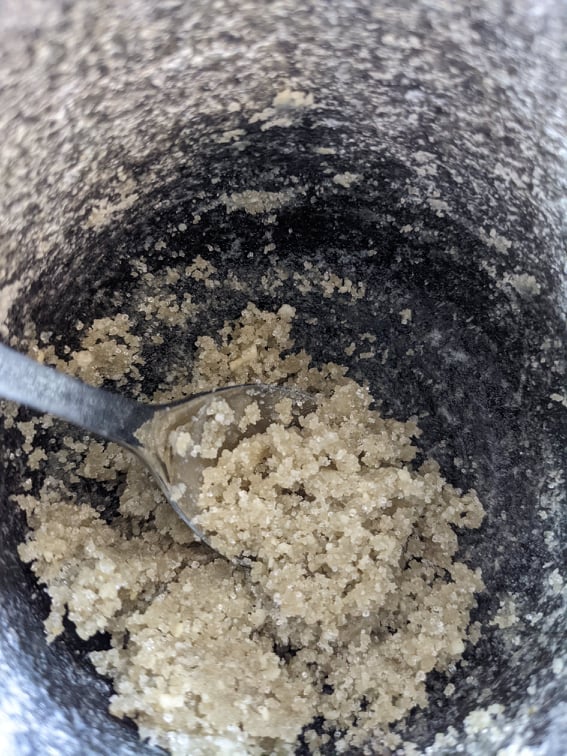The Kuenstlichs und Fuertrefflichs Kochbuch has two recipes for marzipan:

45 To Make Marcepan
Take half a pound of sugar and a whole pound of almonds. Pound the blanched almonds small in a mortar and add a little rosewater to the almonds so they do not turn oily when they are pounded. Add sugar and pound it well together, because it turns thin with the sugar and thus the dough must be made thicker (like that) for snowballs (schneepallen). Take two flat wafers (oblat pletzlein) and stick them together with rosewater as large as you wish to have it. Place the dough on top and beat it well flat like a plate for bread (ein Brotdellerlein). After you have beaten the dough broad, it must not be thick, (only) as thick as a finger is across. Bend the wooden hoop (reyfflein) around it above, put flecklein (literally small patches?) on it like a peasant apron, and bake it on the oven. Do not make it too hot so that it becomes nicely yellow. Strew Trisanet on it. If you would make it with blanched almonds, cut them apart lengthwise, gild the slices on top and stick the marcipan full of almonds that are gilded. Thus you have it.
This recipe is pretty much the standard way these things were made in Renaissance Germany; A paste of almonds and sugar spread on wafers that is decorated in some way – with a glaze, a moulded and often painted or gilded top, or, as in this case, decorative additions. These confections were baked carefully to prevent them from burning. We have similar instructions from, among other sources, Marx Rumpolt and Balthasar Staindl. The second recipe is more interesting:
27 How You Shall Make a Marcipan
Take a handful of rice, set it to cook in thick milk, as thick as can be, let it boil, and when it has boiled, grind it fine in a grinding bowl (Reibscherben), as fine as you can. (possible omission: take almonds) Pour on rosewater, otherwise it will be oily. When it has been pounded as fine as possible, like for marcipan, add it to the boiled rice in the grinding bowl. Grind it well together and add sugar and May butter as though for a Mayen muß. You must not colour it yellow. When you wish to serve it, stick two or four stars (sternlein) into it and serve it cold.
Now this one is slightly unusual (and not entirely clear). I think what it describes is a may or producing mock marcipans that are filled out with cooked rice and butter. I have not tried this yet and wonder whether the consistency can be achieved, but it looks like a promising approach. Of course rice was not exactly cheap, but a handful of rice certainly cost less than one of blanched almonds.
The short Kuenstlichs und Fuertrefflichs Kochbuch was first printed in Augsburg in 1559 and reprinted in Nuremberg in 1560 and subsequently. Despite its brevity, it is interesting especially as it contains many recipes for küchlein, baked or deep-fried confections, that apparently played a significant role in displaying status. We do not know who the famous cook referenced in the title may have been or if he ever existed.
